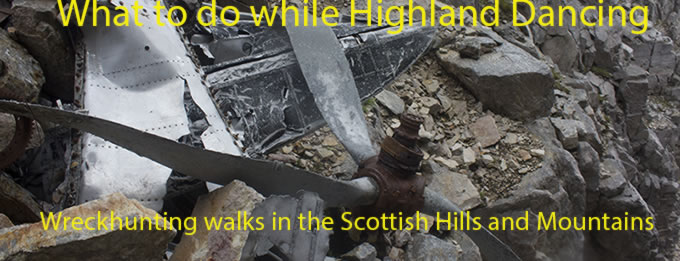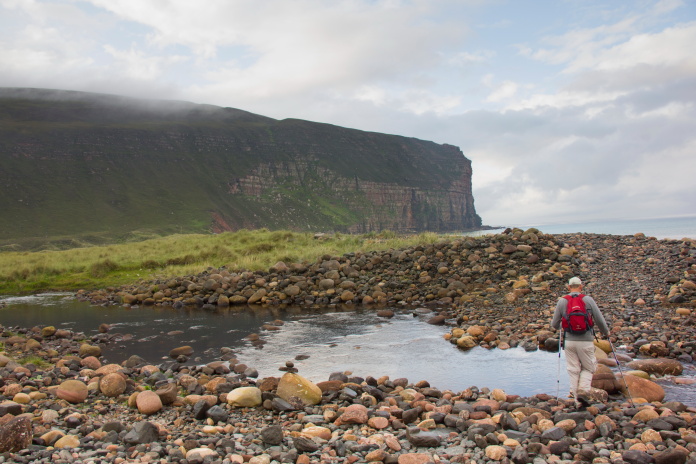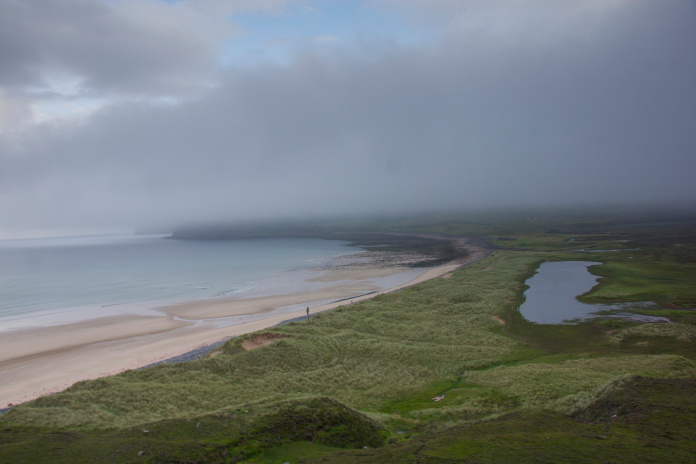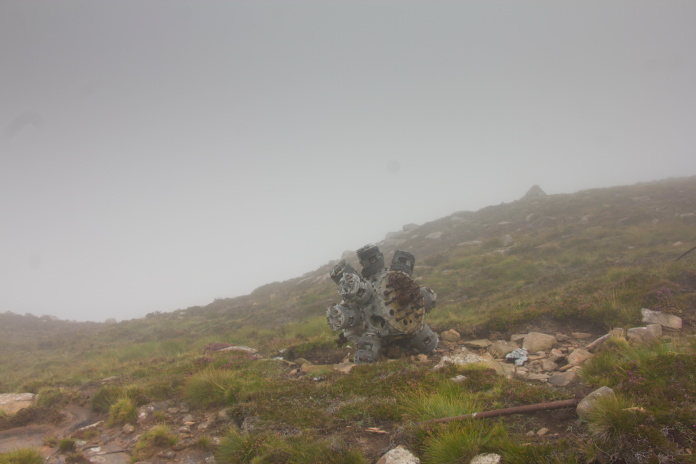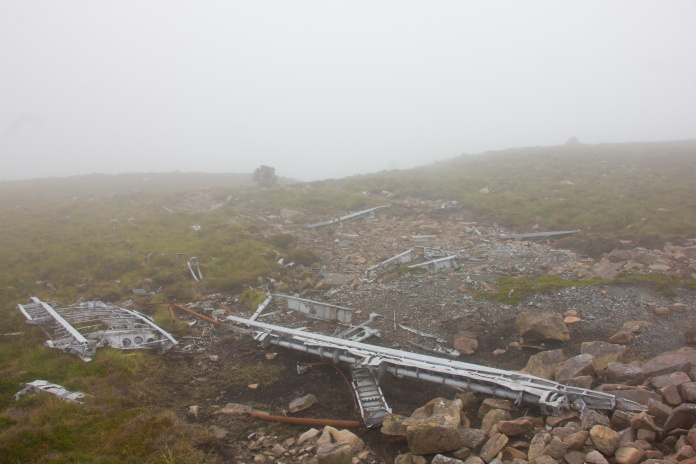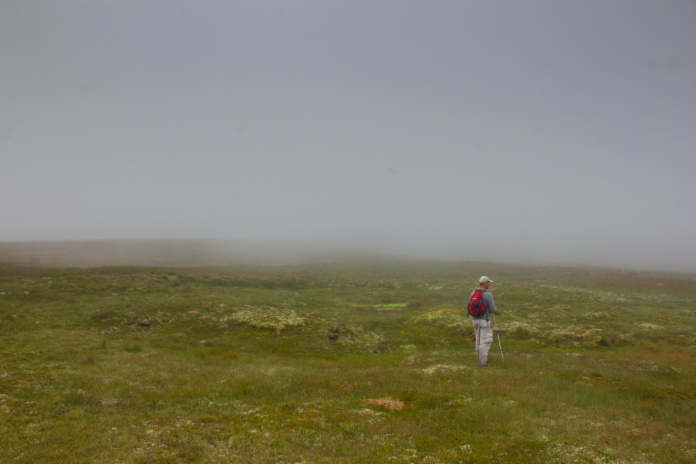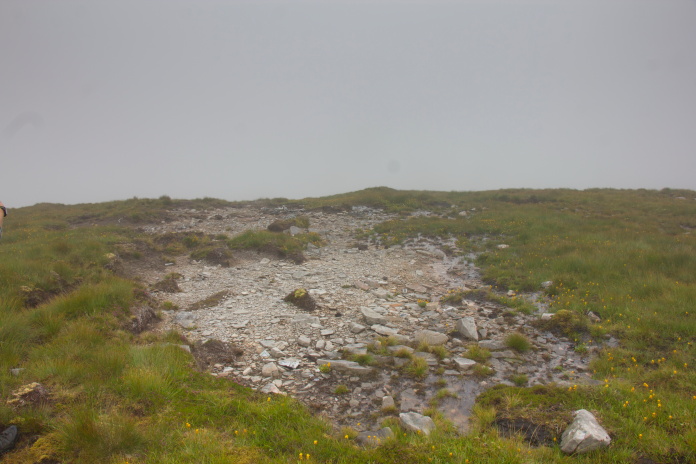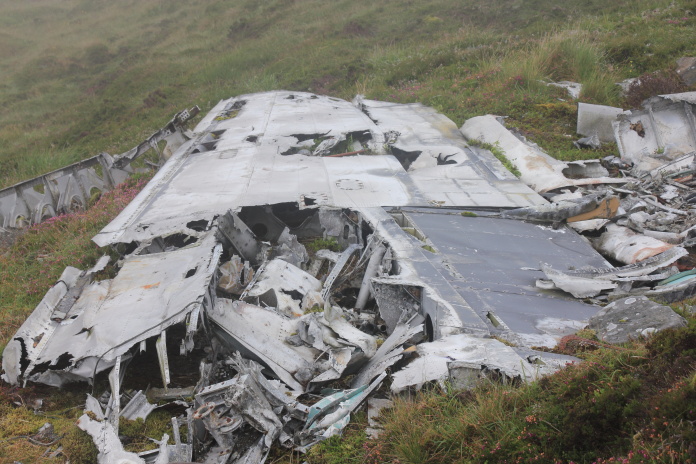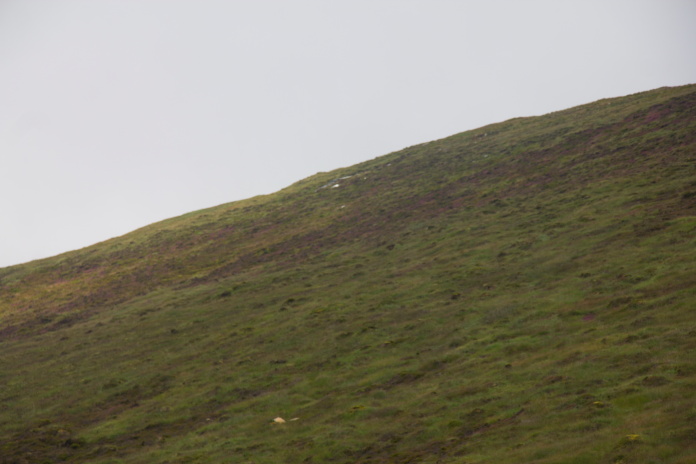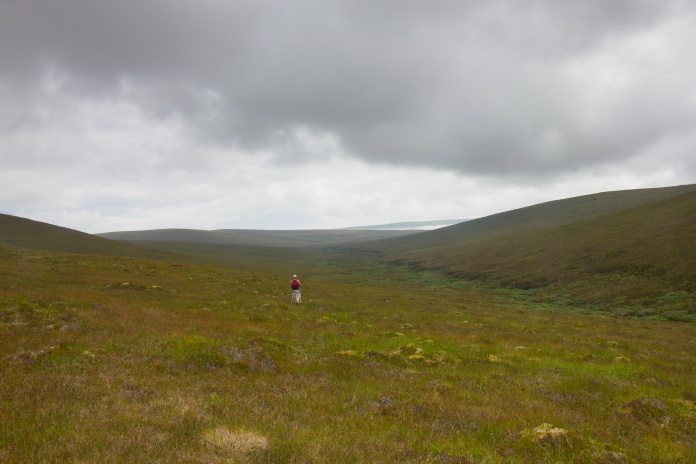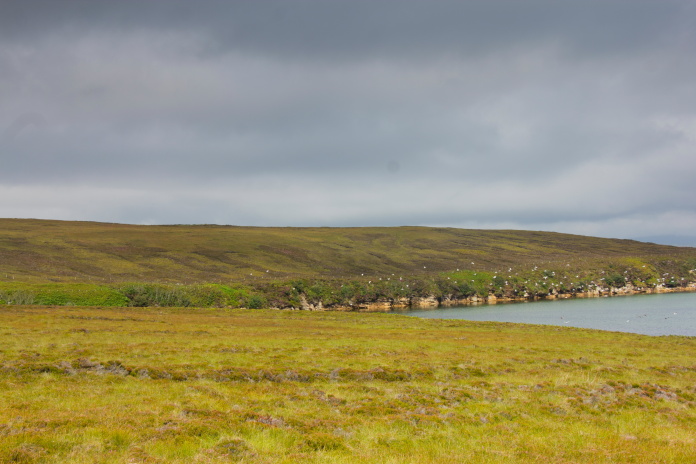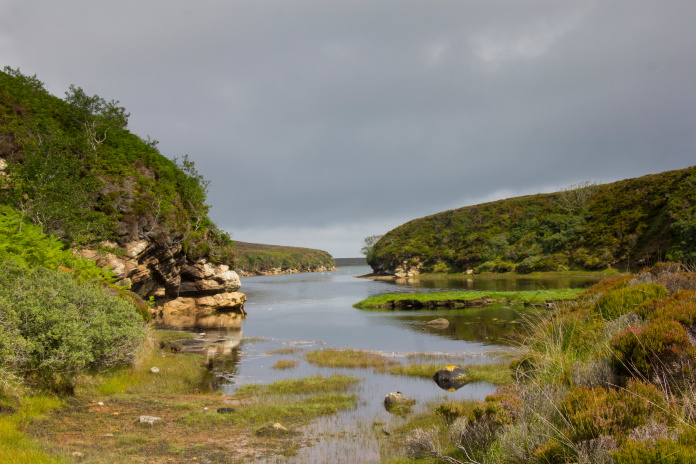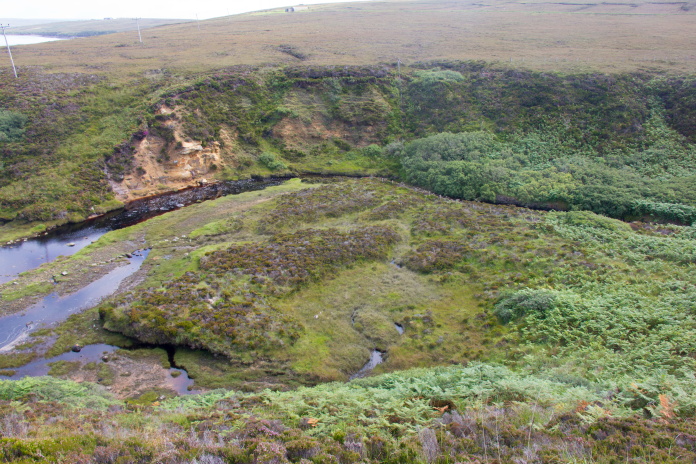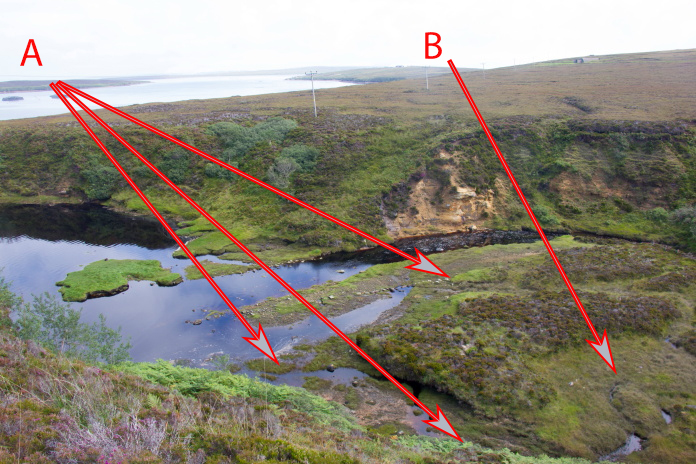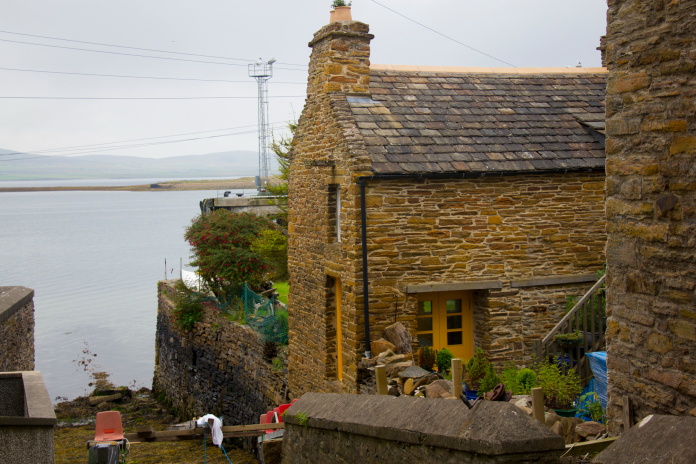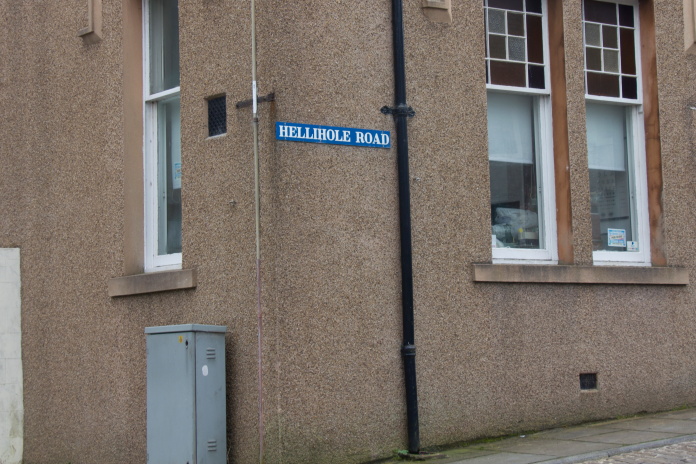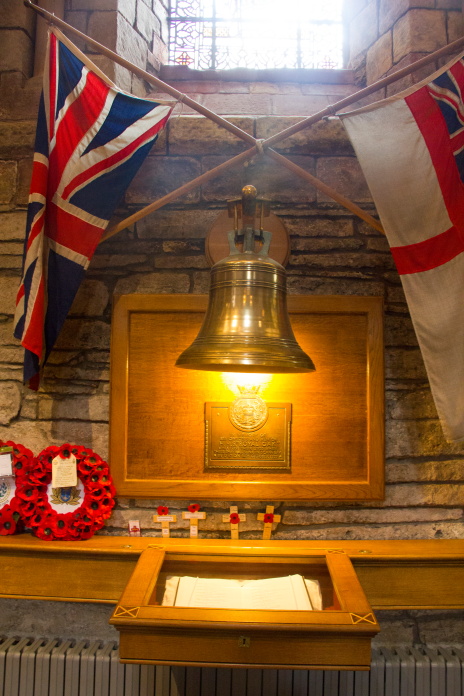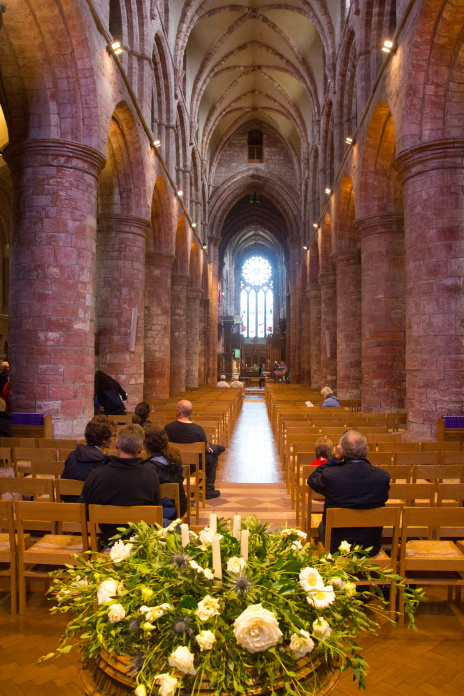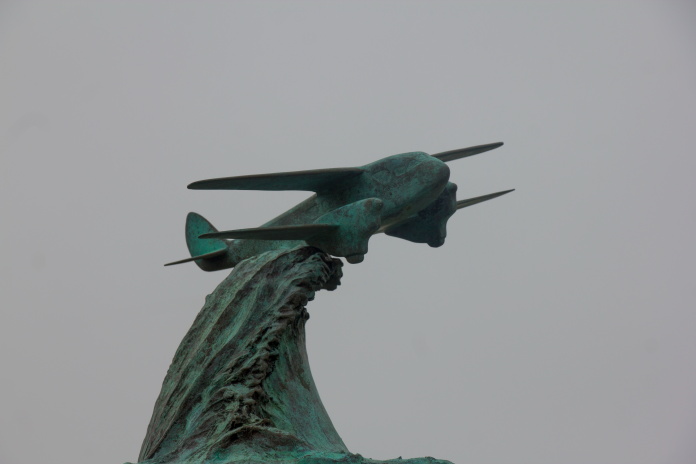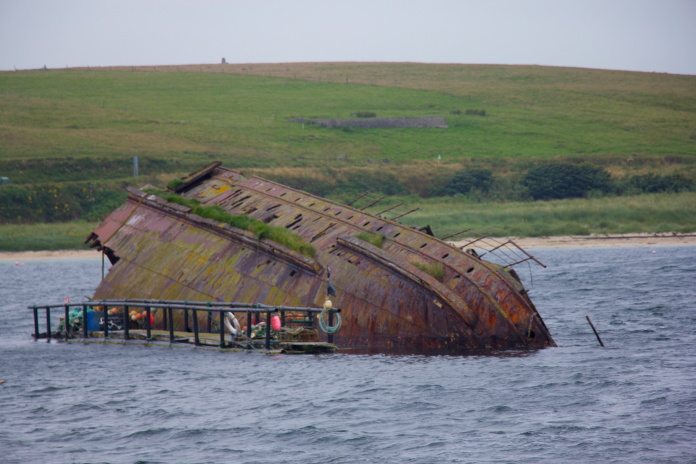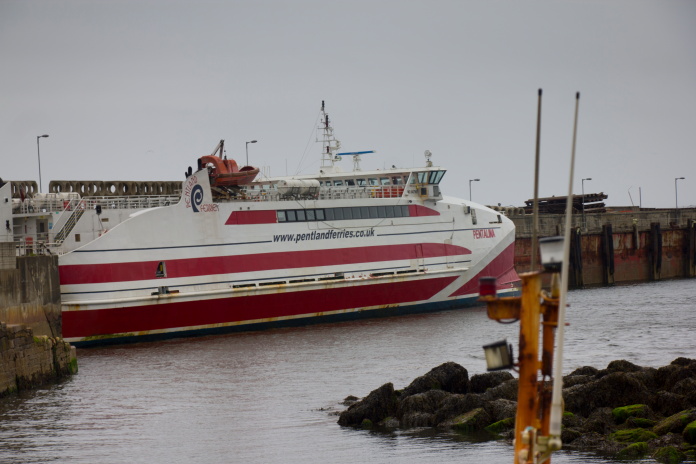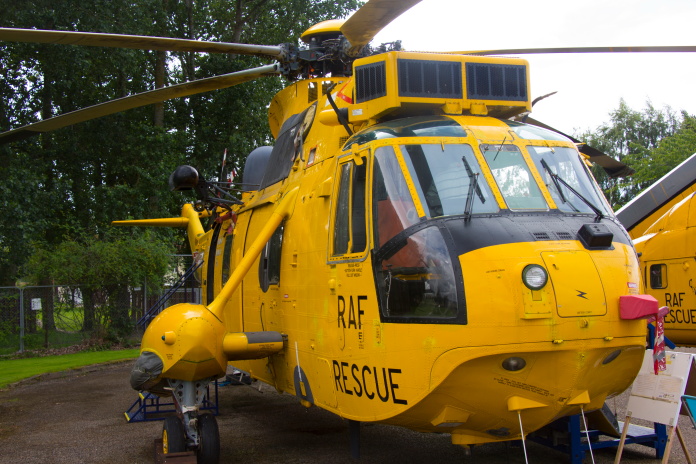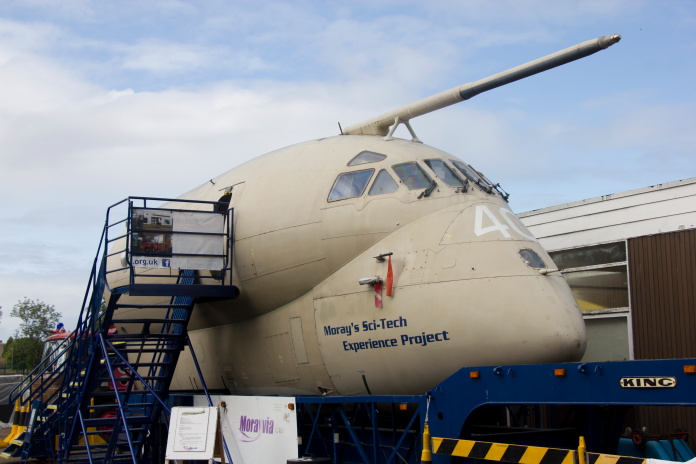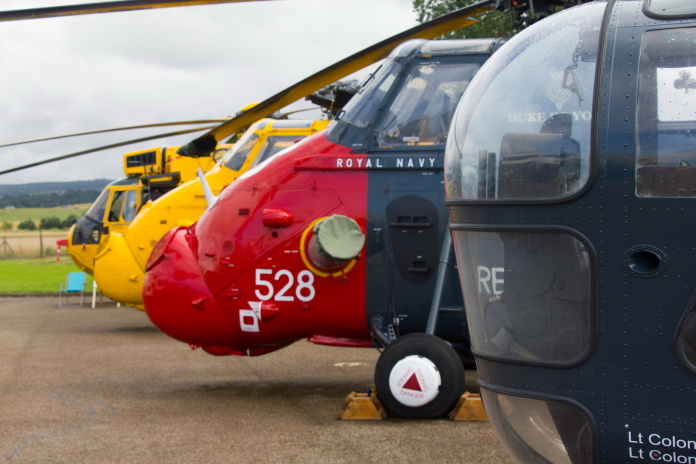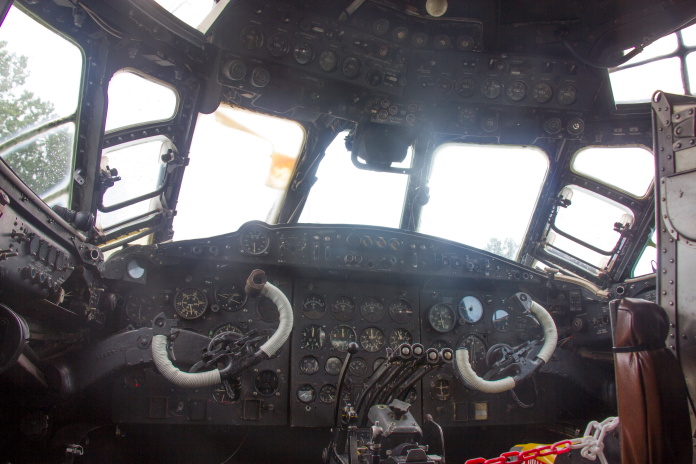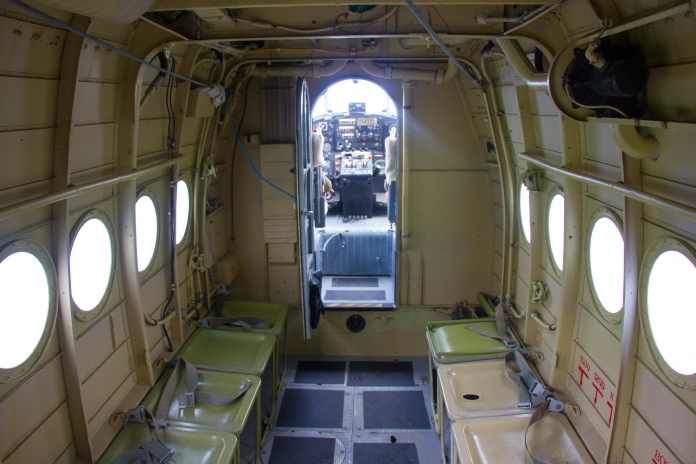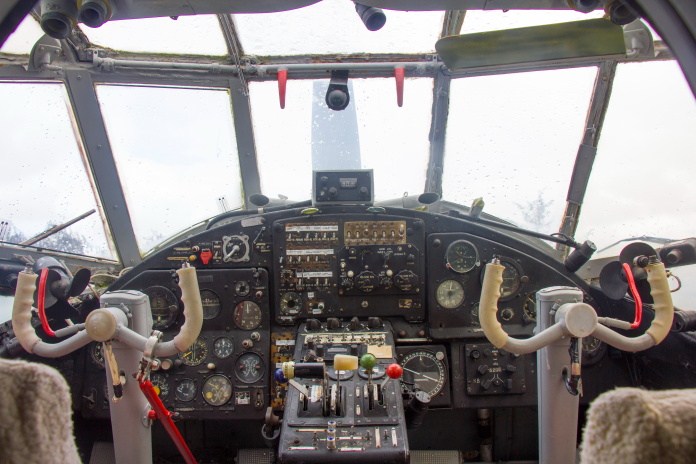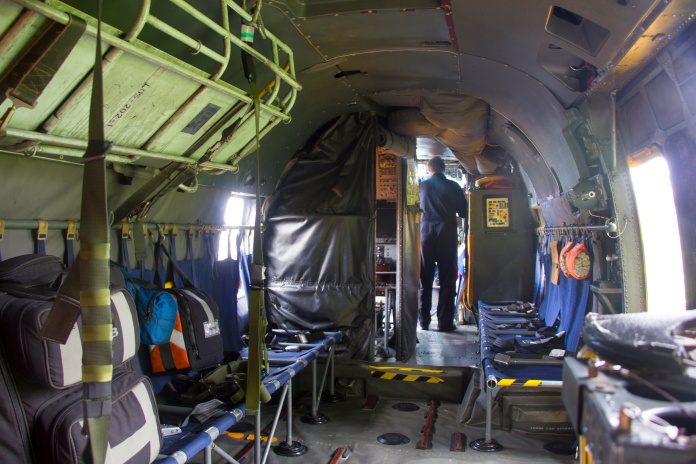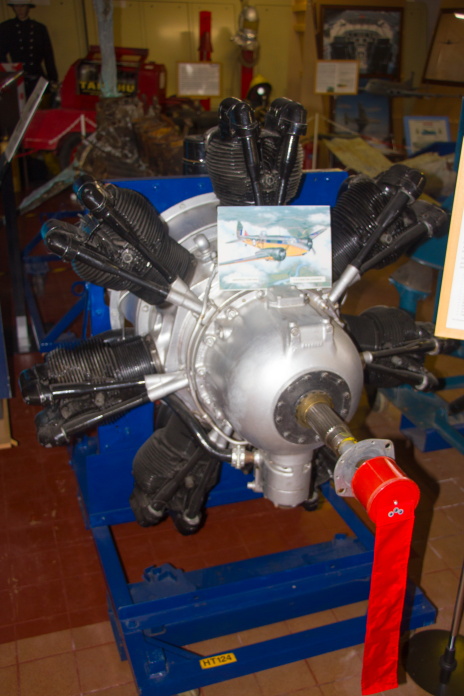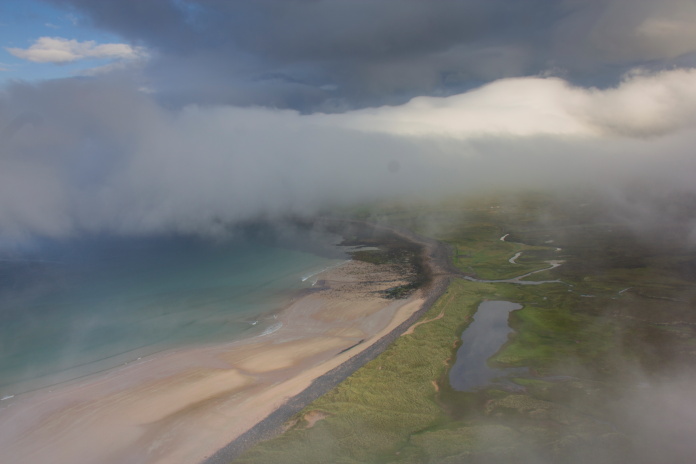The Foggy Bunny.
Fairy Albacore BF592 on Mel Fae.
Lockheed Hudson N7310 on Withi Gill.
Junkers Ju-88 4D+EK at Pegal Burn.
(Distance covered = 10.8 mile/Ascent =+636m)
Some walks just look like they're going to be epics; the walk we had planned around Hoy was one of those and the first part which we had completed the day before certainly hadn't disappointed*.
After walking from the ferry at Moaness to Rackwick Bay, via two crashsites; we had enjoyed a bit of a running battle with the local midge. They eventually forced us to ditch our plans to camp and retreat to the local Youth Hostel. After a shower and a comfortable nights sleep we were off again for the second part of our Hoy adventure.
Heading off to the southern end of Rackwick Bay.
Fairy Albacore BF592 crashed on the top of the cliffs at the southern end of Rackwick Bay. It was a short distance to walk to reach it but the last 500 metres or so seemed like it was almost vertical. Plenty of stops to look back at the view were therefore needed.
above and below:- View back over Rackwick Bay.
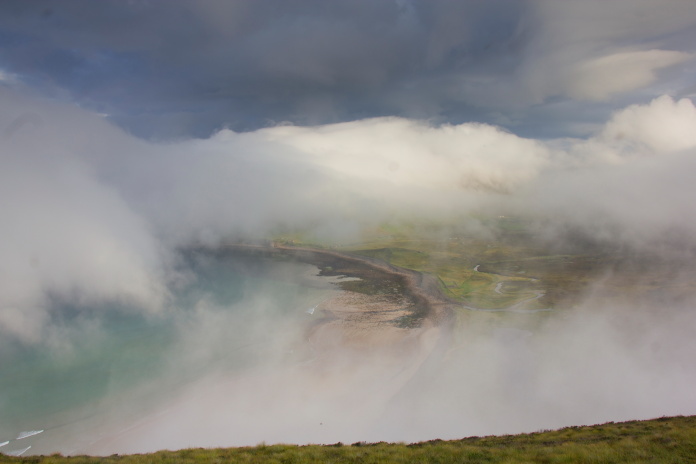
It was a relief when the ground started to level off a bit at the top of the cliffs but this relief was cancelled out by the consternation of having to deal with the midge again; the breeze encountered on the steep climb up had kept them at bay but now we were sheltered from it the midge came after us with a vengeance. To make matters worse we were also enveloped in a cloud.
above and below:- Albacore crashsite above Rackwick Bay.
We couldn't spend much time having a look around the crashsite because of the midge and I was unable to acquire the 'money shot' of the Albacore's engine with Rackwick Bay as a backdrop, because we were in a cloud. So we departed just a little bit frustrated and headed off for the long slog over to Withi Gill and crashsite number two for the day.
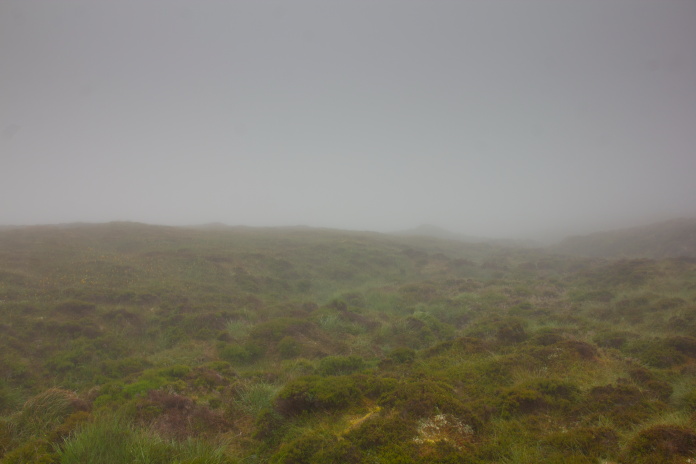
We had planned on following ridges around to Withi Gill; our thinking being the going would be easier on the tops and there would be some canny views on offer but as the cloud we were walking in negated 50% of the advantages we took a more direct line.
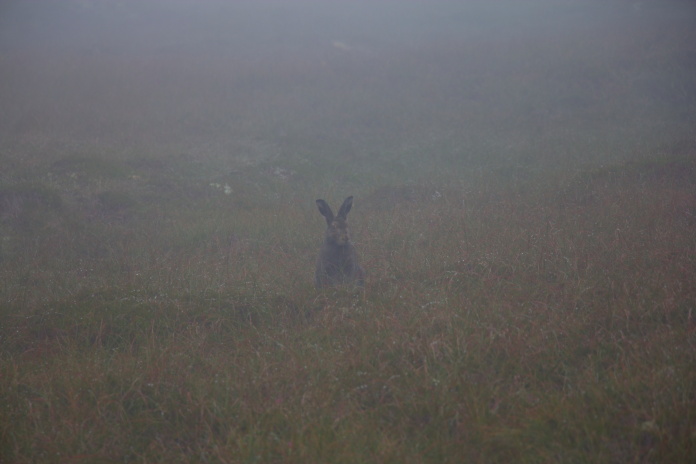
On Withi Gill.
The Hudson crashsite was pretty easy to find and it was just below the cloud cover, better still there were no midge to pester us at this one, so we were able to spend a little more time investigating all the pieces,
above and below:-Wreckage of Lockheed Hudson N7210 on Withi Gill.
View back to the crashsite from the descent of Withi Gill.
From the Hudson crashsite we made our way down to the Burn of Westdale, finding several more bits of Hudson as we went. We then followed the burn downstream until it was joined by the Burn of the White Horse.
Walking alongside the Burn of Westdale,
Stuart recalled finding a large panel from the Hudson down here on a
previous visit but on this occasion we could find no sign of it.
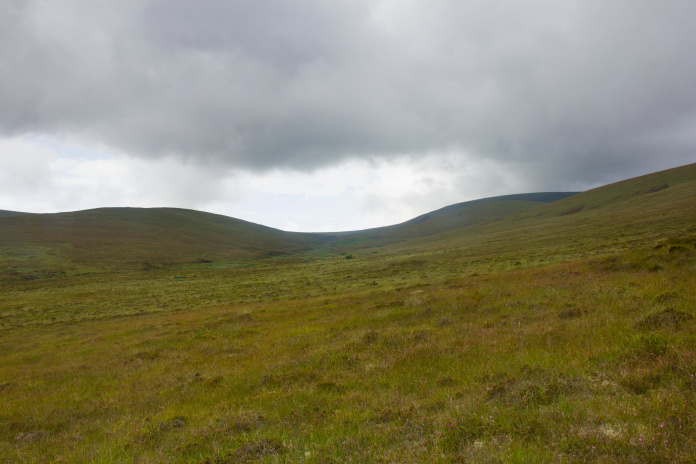
View back to Withi Gill, the bump on the right in the far distance. There is a fifth crashsite on Hoy, we had decided, that as it was a bit of a detour from our route we would wait until we reached the point we were now at to see if we had the time and the energy to make said detour.
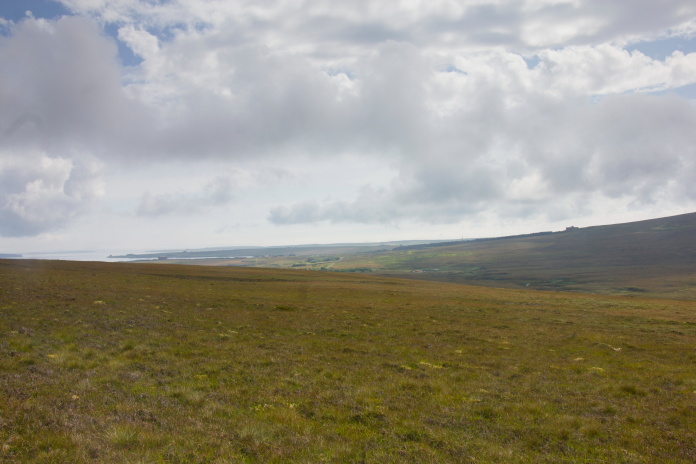
Photo taken just after we crossed the Burn of the White Horse, Lyness can be seen in the distance; our final destination to catch the ferry back to Orkney. We knew there wasn't much, if anything, to be found at the fifth crashsite but as it was the first German Aircraft to be shot down on British Soil during WW2 it was quite historically significant so well worth a visit. Plus we still had plenty of time and plenty of energy, so off we went!
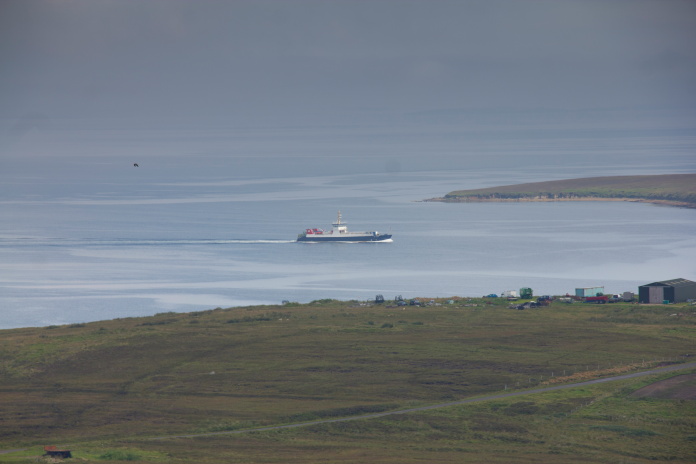
The ferry going into Lyness, taken from the top of Shell Hill, we would be catching this a bit later in the day. A lot of people think the first German plane shot down on British soil during WW2 was the HE111 that crashed at Humbie near Edinburgh on 28th October 1939, that was the first German plane shot down on British mainland soil and in air to air combat; the Ju88 that crashed into the mouth of the Pegal Burn on Hoy was shot down by Anti Aircraft guns while attacking shipping in Scapa Flow on 17th October 1939 so it is this one that rightly has the claim to be the first German Aircraft shot down on British soil during WW2.
Approaching the mouth of the Pegal Burn.
above and below:- Two views of the area where the Ju88 crashed.
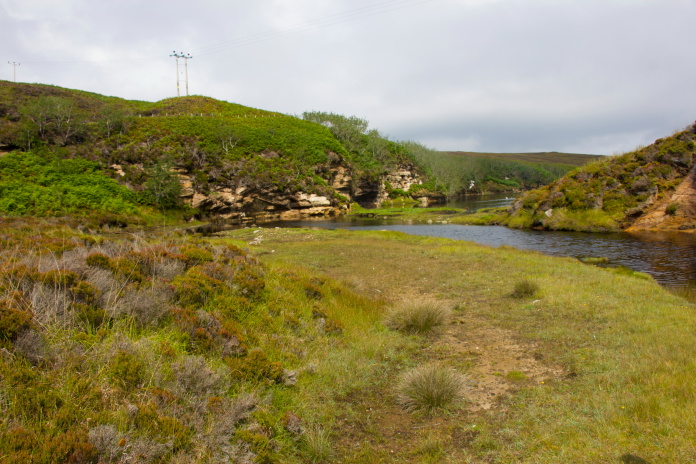
Despite thinking this one would only qualify for my 'probables' list we did discover several fragments of the Ju88 scattered around which was a bonus and a really interesting way to finish off a bit of an epic walk around the Island of Hoy.
Another view of the Ju88
crashsite, could the circular area just below the centre of the photo
be evidence of a crater made by the Ju88 crashing?.
A= Where we found pieces of wreckage, B= Possible remnants of a crater.
After visiting Pegal Burn we called in to pay our respects at the Naval Cemetery at Lyness on the way to catch the ferry back to Orkney, we would have nipped into the museum there as well but unfortunately it was closed for refurbishment. The following day I was unable to get a ferry back to mainland Scotland as they were all fully booked so I spent an extra day exploring the island before eventually heading off home the day after.
above and below:-Having a mooch around
Stromness.
above and below:- The bell from HMS
Royal Oak, now kept in St Magnus Cathedral in Kirkwall.
Bronze sculpture of a Dragon Rapide on top of the Fresson Cairn
which overlooks Kirkwall Airport.
Remains of a block Ship, these were scuttled here during the war a to make
it more difficult for german U-Boats to enter Scapa Flow.
My transport back to the Scottish mainland.
Above and next 7 photos:-Quick visit to
'Moravia' near Inverness, before tackling the long drive home.
